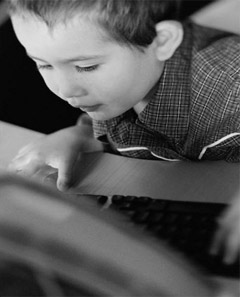Neurotherapy Offers New Hope for Children with Autism
Raising awareness about Autism has gone mainstream. When the popular television show "American Idol" recently profiled a contestant with Asperger's Disorder, millions caught a glimpse of what it is like to live with Asperger's. While James Durbin's inspiring story of overcoming Asperger's through singing is exceptional, more hope is on the horizon for children with Asperger's Disorder. Neurotherapy, in conjunction with a multidisciplinary treatment approach that includes family involvement, is an option proven to be effective.
contestant with Asperger's Disorder, millions caught a glimpse of what it is like to live with Asperger's. While James Durbin's inspiring story of overcoming Asperger's through singing is exceptional, more hope is on the horizon for children with Asperger's Disorder. Neurotherapy, in conjunction with a multidisciplinary treatment approach that includes family involvement, is an option proven to be effective.
Asperger's Disorder, or Asperger's Syndrome, falls under the larger category of Autism Spectrum Disorders (ASD). In recent years, it is estimated 6 to 7 children per 1000 children live with ASD. While a diagnosis of ASD can be made as early at 18 months, a diagnosis of Asperger's is more difficult. The diagnostic symptom criteria for Asperger's disorder include:
- Impairments in social interaction
- Stereotyped or repetitive interests or behaviors
- No significant delay in language development
In addition, Asperger's is considered to be a milder form of ASD. These children generally have normal language development, although they have difficulty reading social cues.
Treating Asperger's with talk therapy or medications has been met with limited success. To understand why "traditional" treatments are not effective, it is important to understand ASDs are viewed as neurobiological disorders with a complex neural and genetic basis.
Brain imaging techniques suggest ASD brains have dysfunctional communication patterns, which points toward something going awry in the process of brain development. Even so, every person's brain is different and this includes ASD brains. By doing a quantitative electroencephalogram (QEEG) on each person, their dysfunctional electrical and connectivity problems can be identified in a process called topographical brain mapping. A comprehensive discussion of brain mapping is beyond the scope of this paper however the following link is very helpful: http://www.qeeg.com/qeegfact.html.
Brain mapping represents how the patient's brain compares to a normal population using a statistical method called Z-scoring. Improvement in core ASD symptoms is achieved as these dysfunctional patterns are normalized using computerized audio and visual feedback given to the patient. This form of therapy has been around for 40 years and is commonly referred to as EEG biofeedback, neurofeedback therapy, neurotherapy and more recently, computer brain interface training.
Many in our industry just use standardized protocols to do neurofeedback therapy and have found success in 70 to 80 percent of ASD cases. We have found that when we use the QEEG to personalize our protocols to each individual, greater success can be achieved. Although not a cure, substantial gains are found in about 35 to 40 sessions. In many cases, medications can be reduced and at times eliminated as the brain becomes more functional. The areas of gain most often seen using neurotherapy with ASD children are in the core measures of attention, executive and visual perceptual function, and language skills. Behaviorally, we see gains in emotional self management, anxiety management, and reduction/elimination of tantrums. What's more, no adverse side effects are reported when using neurotherapy.
Even though Autism and Asperger's are lifelong disorders with no known cure, early intervention while the brain is rapidly growing seems to be a key factor in a child's progress, with improvements in communication, social skills and behavior. What we hope you take away from this article is that ASD is a treatable disorder and there is hope for your child, thanks to the incredible ability of the brain to fix itself when given instruction. Neurotherapy is gaining acceptance as an effective intervention that optimizes treatment and improves outcomes. Parents should consider neurotherapy for their ASD children.